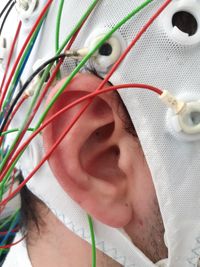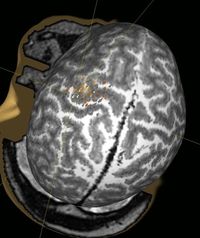Neurophysiology/TMS
"Research in neurophysiology is much more like paddling a small canoe on a mountain river. The river which is fed by many distant springs carries you along all right, though often in a peculiar direction. You have to paddle quite hard to keep afloat. And sooner or later some of your ideas are upset and are carried downstream like an upturned canoe." - Allan L. Hodgkin
Neurophysiological research deals with functions of the nervous system. Imaging and electrophysiological methods (e.g., functional MRI, electroencephalography, electromyography, transcranial magnetic stimulation) help to better understand processes in the brain and changes of the nervous system structure due to diseases of the brain.
Transcranial magnetic stimulation
Transcranial magnetic stimulation (TMS) is used in neurology and neurosurgery for both diagnosis and therapy of various diseases. In patients with tumors in the motor cortex, it can be applied preoperatively to determine the exact spatial relationship of the tumor to motor fiber tracts, thus enabling improved surgical planning. However, time series analysis (i.e., latency and amplitude) of motor evoked potentials (MEP) triggered by magnetic stimulation often can detect differences only in the case of already pronounced motor impairments. Therefore, we have established a time-frequency analysis of MEPs in several studies and could demonstrate that this analysis is more sensitive compared to the conventional analysis technique. Hence, time-frequency analysis has the potential to predict differences in molecular and pathological tumor characteristics:


